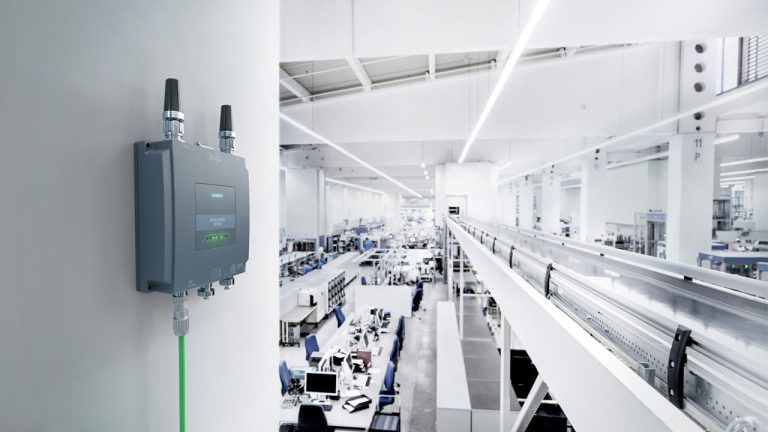Today’s industrial sector is on the brink of a new era, marked by the digital transformation of operations and the integration of advanced technologies. In this dynamic landscape, establishing reliable communication systems is a cornerstone for achieving heightened efficiency and operational excellence. Wireless solutions are central to this technological pivot, particularly the implementation of Ethernet radios, which have redefined the parameters of connectivity in industrial environments. These wireless systems offer a versatile and powerful alternative to traditional wired networks, overcoming physical constraints and facilitating seamless data exchange. This article aims to shed light on the pivotal role of wireless communication technologies in industrial applications, underscoring their importance in crafting robust, efficient, and scalable network infrastructures.
The Backbone of Industrial Automation
In this era, the robustness of industrial automation is significantly bolstered by the adoption of wireless technology, offering unparalleled flexibility in deploying automation systems across varied environments. This technology enables seamless data exchange between machines and control systems, facilitating a level of synchronization and efficiency that was previously unattainable. Wireless networks reduce the complexity and cost associated with traditional wired systems, making automation accessible to a broader range of industries. Moreover, the reliability and speed of modern wireless solutions ensure that real-time operations are conducted smoothly, enhancing productivity and reducing the likelihood of downtime.
Integration with Emerging Technologies
Wireless solutions in industrial automation are not just standalone systems but integral components that synergize with emerging technologies such as IoT, AI, and ML. This integration enables the creation of intelligent industrial environments where machines can predict maintenance needs, optimize energy consumption, and adapt to changing operational requirements in real-time. For instance, IoT devices can collect vast amounts of data from the production floor, which AI algorithms analyze to identify patterns, predict equipment failures, and suggest optimizations, thereby preventing downtime and extending the lifespan of machinery. This technological synergy enhances operational resilience and drives efficiency to unprecedented levels.
Enhancing Worker Experience and Safety
Beyond operational efficiencies and data management, wireless solutions significantly improve personnel’s working conditions and safety. By enabling remote monitoring and control, workers are less exposed to hazardous conditions, reducing the risk of accidents and improving overall workplace safety. Furthermore, wireless technology facilitates better ergonomics and less physically demanding tasks, as manual interventions are minimized. This contributes to a safer work environment and boosts worker morale and productivity by allowing staff to focus on more strategic and less routine tasks.
Eco-friendly Operations
Wireless solutions also pave the way for more sustainable and eco-friendly industrial operations. Industries can significantly lower their environmental footprint by optimizing resource use and reducing waste through improved efficiency and process control. For example, real-time energy consumption monitoring and automated adjustments can lead to substantial energy savings, while predictive maintenance can prevent hazardous spills and leaks. The move towards wireless also reduces the need for physical materials such as cables and conduits, further contributing to environmental sustainability goals.
Global Competitiveness and Market Responsiveness
In today’s globalized economy, quickly adapting to market changes is crucial for maintaining competitiveness. Wireless industrial automation systems offer unparalleled flexibility and scalability, allowing businesses to rapidly adjust their operations in response to shifting market demands, supply chain disruptions, or new regulatory requirements. This agility ensures companies can seize market opportunities and mitigate risks more effectively than ever, keeping them ahead in a competitive landscape. Adopting wireless technologies is a strategic investment in future-proofing operations, ensuring businesses remain resilient and responsive in a fast-evolving marketplace.
Facilitating Real-time Decision Making and Process Optimization
The capability of wireless communication systems to deliver real-time data is pivotal for dynamic decision-making and process optimization. Instant access to operational metrics and performance data enables managers to make informed decisions swiftly, adjusting production parameters to optimize efficiency and output. This agility is critical in maintaining a competitive edge, allowing businesses to respond instantly to operational challenges and market opportunities. Furthermore, integrating wireless systems with analytics and machine learning tools can uncover insights for predictive maintenance, quality control, and energy management, driving continuous improvement across all facets of industrial operation.
Conclusion
In the journey towards digitalization and enhanced operational efficiency, the role of wireless communication systems, underscored by technologies such as Ethernet radios, cannot be overstated. These solutions provide the flexibility, efficiency, and scalability needed to meet the demands of modern industrial operations and are crucial in ensuring data accuracy, safety, and compliance. As industries continue to navigate the challenges of the 21st century, integrating robust, reliable wireless communication systems will remain a key driver of innovation and growth. Embracing these technologies is not just an investment in network infrastructure but a commitment to a future where industrial operations are safer, more efficient, and infinitely adaptable.

